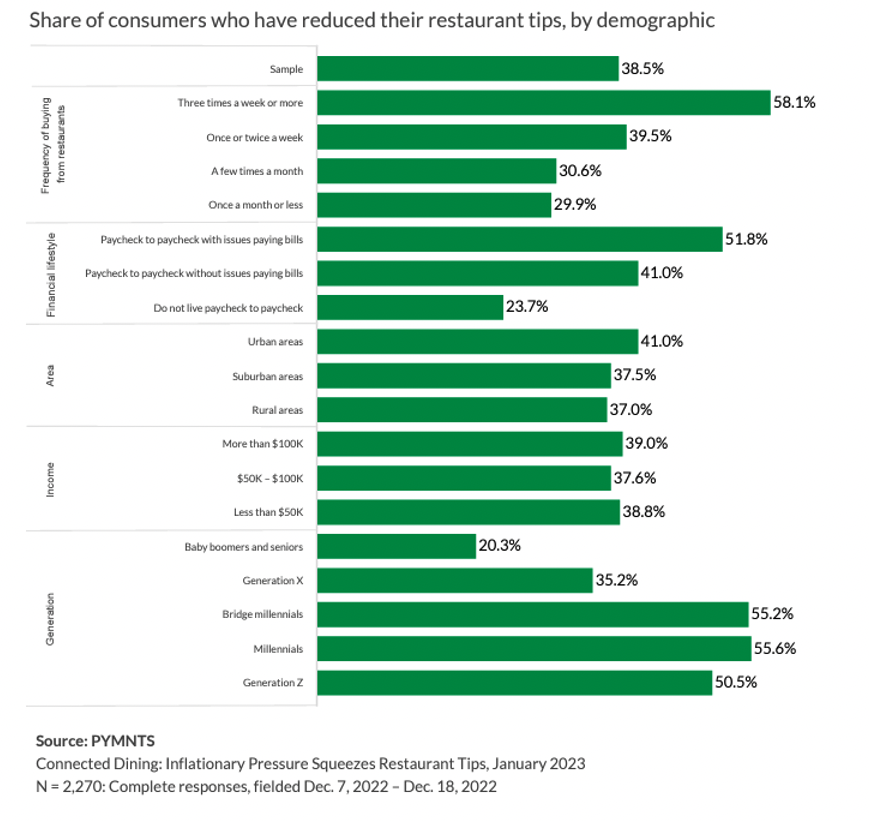
With consumers tipping less, restaurant owners are weighing the risks of alienating diners against workers seeking better pay arrangements.
Nearly everyone involved agrees that the modern gratuity system that began in 1966 with the Congressional introduction of sub-minimum wage for tipped employees, needs improvement. Restaurant workers are paid as little as $2.13 per hour, as the rest of their hourly pay is presumably made up in tips.
That creates a bit of a gamble for servers and other employees, even during the best of economic times, as wages depend on how many customers come in during a shift and how much is ordered. If patrons tip industry standard on a relatively busy Friday, the server and other front-of-house staff may have a good earning night, but the opposite may be equally true on an empty Wednesday.
These are not the best of economic times, leaving some customers offsetting higher menu prices due to food inflation with reduced gratuities. PYMNTS’ “Connected Dining: Inflationary Pressure Squeezes Restaurant Tips” report breaks down which diners are tipping less by demographic.
 Overall, 39% of consumers are leaving less in tips after a restaurant meal, yet 58% of those who dine very regularly have lowered their tips, as have 55% of millennials. The report found that while service quality was very or extremely influential for 72% of consumers in their decision on how much to tip, nearly all other factors lay outside servers’ control. These include the taste of food (cited by 61% of diners), personal financial considerations (39% of customers) and simply the expectation that a tip should be left (34% of consumers).
Overall, 39% of consumers are leaving less in tips after a restaurant meal, yet 58% of those who dine very regularly have lowered their tips, as have 55% of millennials. The report found that while service quality was very or extremely influential for 72% of consumers in their decision on how much to tip, nearly all other factors lay outside servers’ control. These include the taste of food (cited by 61% of diners), personal financial considerations (39% of customers) and simply the expectation that a tip should be left (34% of consumers).
Whatever the motivations, less gratuity being left has put owners and their front-of-house employees in a bind over how to make up the wage gap, The Wall Street Journal (WSJ) reported Friday (Aug. 18). Chicago is one major city considering how to change the system and guarantee fairer pay to these workers. City lawmakers are considering legislation forcing large businesses to pay their servers and other tipped employees the $15.80 per hour municipal minimum wage.
While some owners support the proposed law, others fear it will fatally eat into their profit margins, which have already been thinned by rising supplier food prices and decreased foot traffic in once-popular areas, per the report. Another possible solution to make up the wage gap for these workers has been for restaurants to add a mandatory gratuity.
In New York, Michelin-starred Per Se’s implementation of automatic gratuities has been met with mixed reception.
With food inflation still on the rise and menu prices not set to come down anytime soon, the tipped wage system debate will almost certainly rage on. Until a solution is reached, servers will remain at the mercy of whether customers want to tack on a tip for the foreseeable future.